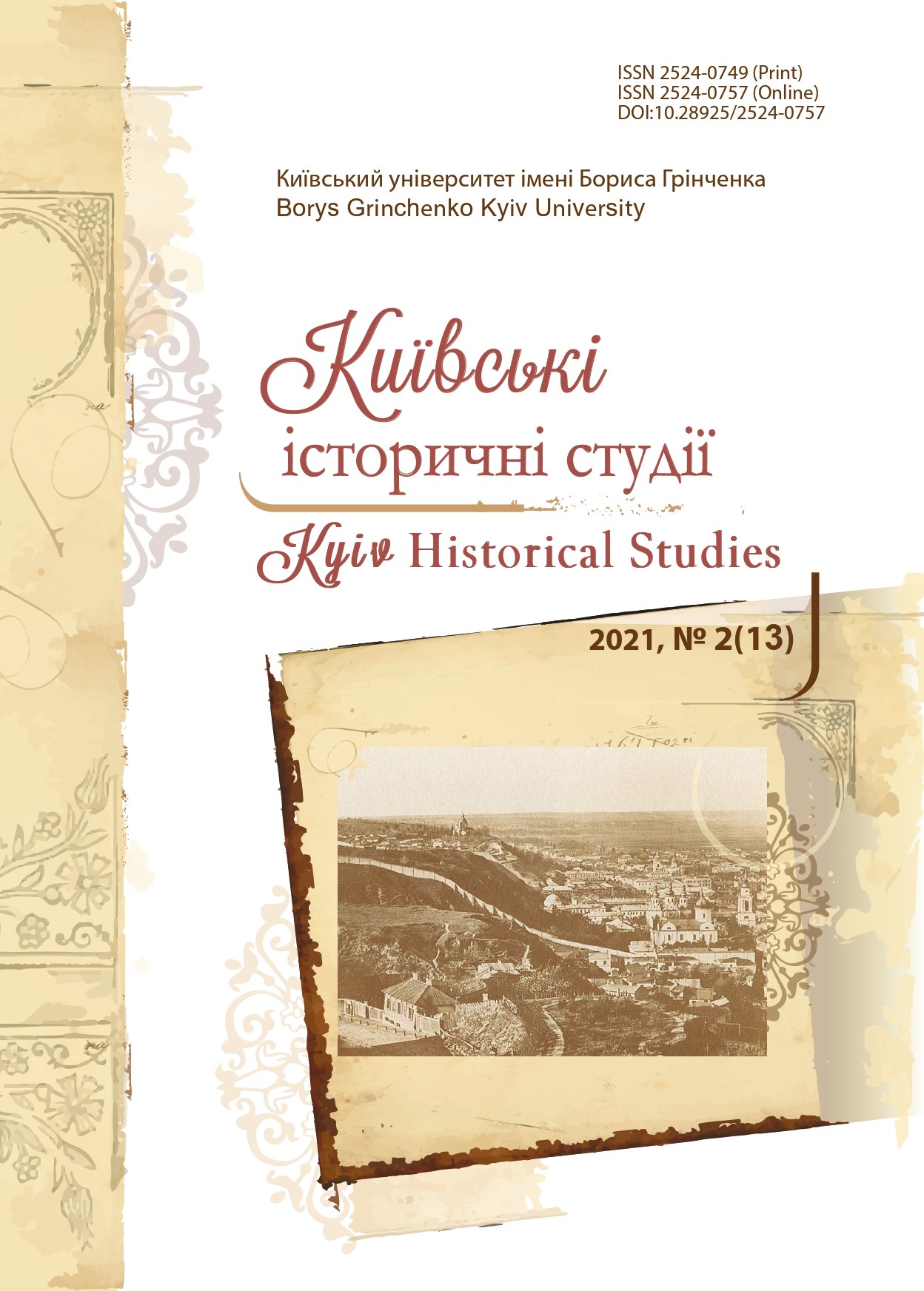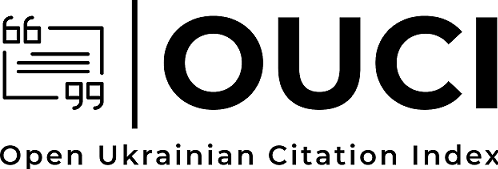Kyiv and Chernihiv Regional Newspapers as a Source of Strategies of the Authority Related to Involving Pupils as Executors of Holodomor Policy in 1932–1933s
DOI:
https://doi.org/10.28925/2524-0757.2021.215Keywords:
Holodomor, regional media, authority, executors of Holodomor, pupilsAbstract
The article aims to examine the regional media (Kyiv and Chernihiv cases) as a sources of the investigation of authorities’ strategies in 1932–1933s for the role of pupils of the village schools in the context of implementation of the Holodomor policy. The article is a unique research for the reflection of this problem in Kyiv and Chernihiv regional media of the Holodomor period. Also it is a first research attempt to portrait the specific features of the authorities’ strategies regarding pupils involvement in the Holodomor practices. Although the media in USSR have always been under authorities’ pressure and have always served them, the informative potential of the Kyiv and Chernihiv regional newspapers of 1932–1933 enabled to investigate the key problem related to the above-mentioned field of Holodomor. The newspaper’s articles about every day practices are based to examine of the authorities’ plans of involving the pupils into these practices. The number of such articles which were revealed and studied in the media from different regions convincingly argue that authority aspired to turn pupils into executors of Holodomor policy. This process was performed in parallel with the strategies aimed to the global sovietization of the children. The pupils in all parts of Kyiv and Chernihiv regions were used for an agitation of the farmers to carry out of plan that was not real, to provide credits for governments and of searching and expropriation of farmer’s grain. The pupil’s denunciation of people who have grain were tolerated and inspired.
Downloads
References
Diptan, I. (1993). Holod 1932–1933 i dytiacha bezprytulnist na Slobozhanshchyni. Naibilshyi zlochyn imperii (pp. 43–45), Kyiv [іn Ukrainian].
Kulchytski, S. V. (Ed.), Mace J. (Ex. dir.). (2008). Velykyi holod v Ukraini 1932–1933 rr.: u IV t. Zvit Konhresovo-prezydentskoi Komisii SCHA z doslidzhennia Velykoho holodu 1932–1933 rr. v Ukraini, Vol. IV, Kyiv [іn Ukrainian].
Kulchytski, S. (2013). Chervonyi vyklyk. Istoriia komunizmu v Ukraini vid yoho narodzhennia do zahybeli [The Red Challenge. The History of Communism from Origion to Сollapse]. Vol. 2, Kyiv: Tempora [іn Ukrainian].
Marochko, V. (2007). Holodomor 1932–1933 rr. Kyiv [іn Ukrainian].
Levchuk, N., Boriak, T., Volovyna O., Rudnytskyi, O., & Kovbasiuk, O. (2015). Vtraty miskoho i silskoho naselennia Ukrainy vnaslidok Holodomoru v 1932–1933 rr.: Novo otsinky. Ukrainskyi istoprychnyi zhurnal, 4, 84–112 [іn Ukrainian].
Perkovskyi, K. Pyrozhkov, C. (1989). Demohrafichni vtraty URSR u 30-ti rr. Ukrainskyi istoprychnyi zhurnal, 8, 24–36 [in Ukrainian].
Romanets, N. (2011). Pid Patronatom Kolhospnoi Systemy: Pravove Stanovyshche Selianskykh Ditei-syrit u Postholodomornomu seli (1933–1936). Borysten, 12, 26–27 [іn Ukrainian].
Serhiichuk, V. (2018). Holodomor 1932–1933 rokiv yak henotsyd ukrainstva. Vyshhorod [іn Ukrainian].
Shugalyova, I. M. (2016). Zaporizkyi budynok nemovliaty: konveier smerti v sertsi industrialnoho mista [Zaporizhzhya House of Babies: conveyor of death in the centre of the industrial city]. Zaporizhzhia Historical Review, 40, 217–225 [іn Ukrainian].
Yakubovski, I. (2021). Presa v mekhanizmi Holodomoru 1932–1933 rr. (na prykladi raionnykh hazet Kyyivskoi oblasti) [The Media in the Mechanizm of Holodomor of 1932–1933s (Kyiv Regional Newspapers: case study)]. Kyiv Historical Studies, 1, 174–180 [іn Ukrainian].
Published
How to Cite
Issue
Section
License
Copyright (c) 2021 Ігор Якубовський

This work is licensed under a Creative Commons Attribution-NonCommercial-ShareAlike 4.0 International License.
Authors who publish in this journal retain the right of authorship of the work and give to the journal right of first publication of this work under the conditions of Creative Commons: Attribution-NonCommercial-ShareAlike 4.0 International (CC BY-NC-SA 4.0), which allows others freely distribute the work published with reference to the authors of the original work and the first publication of this magazine.














